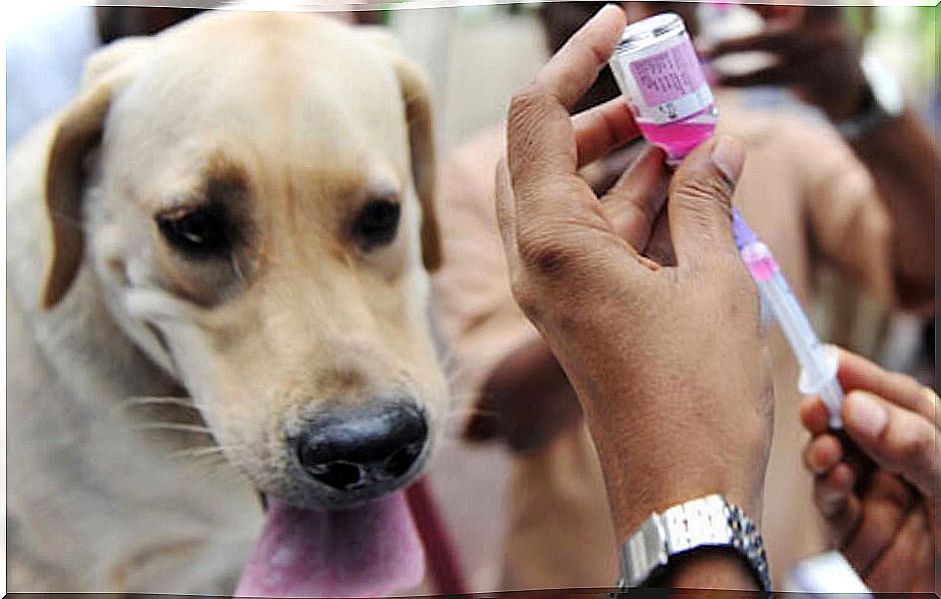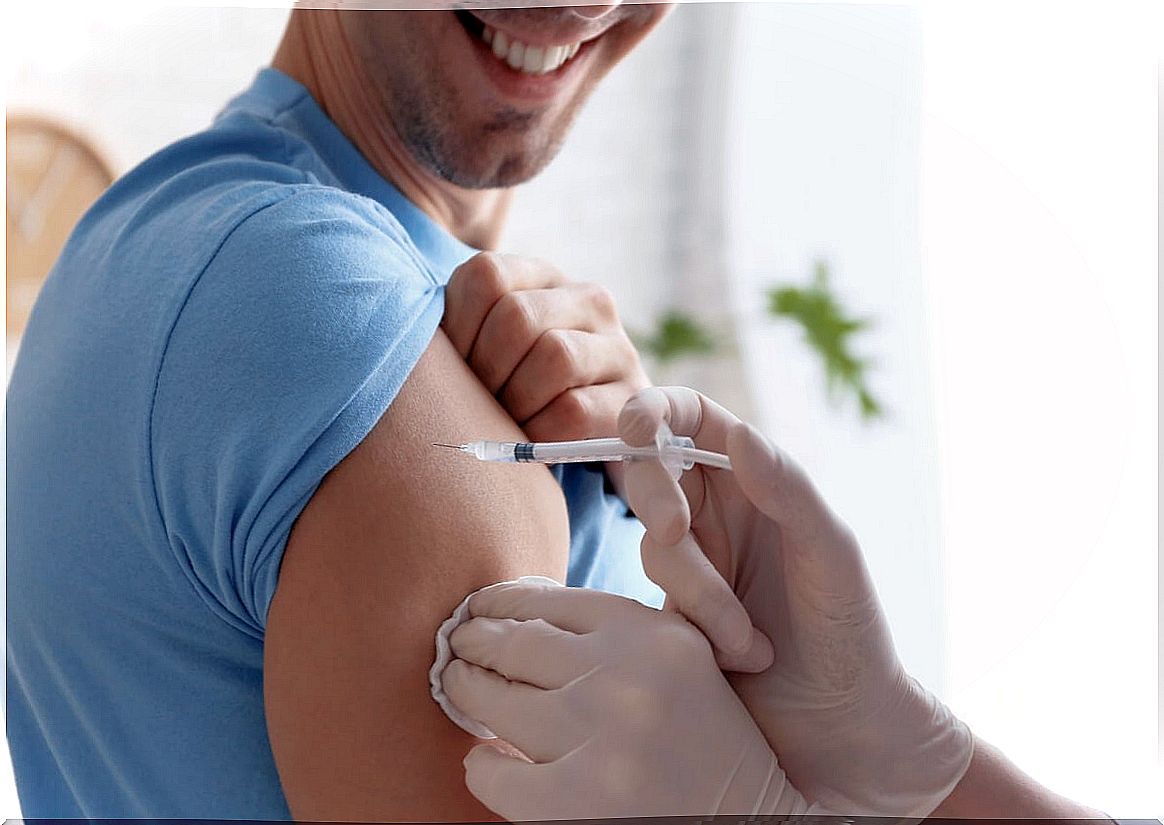Treatment Of Rabies
Treatment of rabies should be carried out as soon as possible whenever it is suspected that a person may be infected with the virus. Even if there are no signs or symptoms of it yet.
In this sense, there are three basic points in which you can act against this disease:
- Prevention.
- Symptomatic treatment.
- Treatment of rabies immediately after exposure.
In this article we talk about it.
Prevention
There are two types of prevention for rabies, animal-focused and human-focused. On the one hand, you should try to eliminate rabies in animals and avoid dog bites. On the other hand, a rabies awareness and immunization process should be carried out in the population.
Eliminate canine rabies

Vaccinating dogs is the most cost-effective way to eliminate canine rabies. In addition, it is the most effective strategy to prevent rabies in humans. With this method, the need for prophylactics later, as well as the number of deaths associated with rabies, is greatly reduced.
Rabies awareness and dog bite prevention
Dog training is aimed at achieving good behavior and, thereby, preventing possible bites. For this, it is necessary to improve the knowledge of the communities regarding the prevention and fight against rabies. Specifically, on the responsibility of having a dog as a pet and the prevention and treatment of bites.
The commitment of the communities, and their active participation in the prevention programs that are carried out, is a very important tool to improve the coverage and reception of information by the general population.
Preventive human immunization

Today there are preventive rabies vaccines. That is, immunization will occur even if there is no exposure to the virus. The rabies vaccine is specifically recommended for people who:
- Go traveling to remote areas where there is a high incidence of rabies.
- Are foreigners and live in countries where the disease is transmitted.
- Children who live in or visit high-risk areas, as they tend to play with animals.
- They have high-risk occupations (laboratory personnel who work with the rabies virus or others).
- Personnel who may have direct contact with: bats, carnivorous animals and other mammalian animals from areas affected by rabies.
Treatment of rabies immediately after exposure
It is a post-exposure prophylactic treatment. The goal of this treatment is to prevent the virus from entering the central nervous system, as this would cause immediate death. The steps to carry out this treatment are:
- Clean the wound as soon as possible. This should be done for a minimum of 15 minutes with soap and water, alcohol, or povidone iodine.
- Administer a powerful and effective rabies vaccine. The vaccination schedule for the treatment of rabies is 5 doses, which must be distributed in a month, on days 1, 3, 7, 14 and 30. The first day being the day of exposure.
- Administer, if indicated, rabies immunoglobulin. It is a preparation of antibodies that directly attack the virus without the need to activate the immune system.
- Thus, they prevent the virus from reaching the nervous system and the consequent death of the patient. It is usually administered for very deep wounds that present a lot of bleeding. There are no significant adverse effects.
It is important to say that, if the individual cannot be vaccinated on the same day that they have been exposed to the virus, they can also be vaccinated for a period of two weeks. However, it must be taken into account that the effectiveness decreases as the days go by.
Symptomatic treatment

Symptomatic rabies treatment should be used when vaccination or prophylactic treatment has failed. Or also when the latter was not carried out and the individual already presents the symptoms of the disease.
Thus, symptomatic treatment is aimed at reducing hyperactivity and fear of water or air, which are characteristic symptoms of rabies. For this, tranquilizers and sedatives are used.
However, it is important to note that there is currently no known treatment for a rabies infection; the disease is usually fatal. Although there are reports of patients who have survived thanks to experimental treatments.









